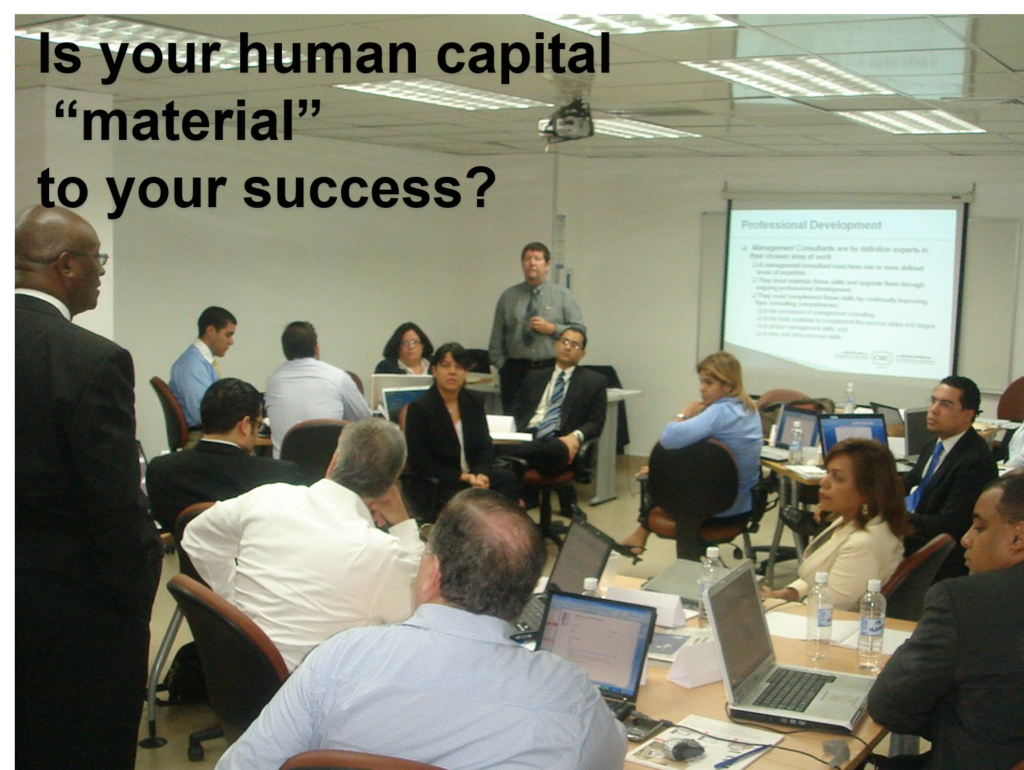
In the knowledge economy, human capital or “people” are the most important resource that an organization uses. ALL people are important to an organization – professionals and skilled, semi-skilled or unskilled – they are all part of the system that allows the organization to achieve its stated purpose. However, reporting to owners and investors about the health of an organization’s relationship with its people has always appeared problematic. While the <IR> framework, developed by the IIRC, has recognized human capital as a key input and output, within business models, there is scant evidence that the framework is providing the extra insights necessary for assessing organizational health. This means investors remain unaware of the potential risks involved in unhealthy cultures. So where and why is the organization’s system failing and what can be done to resolve this fundamental issue in value optimisation?
First, the whole concept of materiality, that underpins accounting and audit practice and opinions, fails to effectively address the need for measurement of the financial value produced by human capital. As such, it is out of sync with today’s socio-economic system that is having to adjust to shifting societal norms. Practically, it undermines the “Materiality Map” upon which SASB bases its recommendations for reporting. In both cases, consider this:
- For many organizations, people or human capital consumes the largest part of cash flow with payroll costs often making up more than 50% of total expenses; yet the effectiveness of this expenditure is not considered material?
- People also have one of the greatest impacts on relationships with customers, suppliers, and regulators. Does their attitude, and the quality of these relationships, have a material impact on this aspect of the business?
- People are at the heart of innovation and creativity; so is their motivation and capability, for engaging their full brainpower, material?
From a reporting perspective, organizations seem to view the whole concept of ‘human capital management’ as a simple matter of producing a list of HR metrics (e.g. number of employees). Such reporting may be voluntary, or already required by statute, for compliance without any causal connection being made to the value of the organization as a whole.
For example:
- Voluntary information might include levels of training, length of service, breakdown of staff by skill levels, geographic breakdown, supervisory ratios, pay, incentive on bonus information (especially executive and board), retirements, turnover, absenteeism.
- Statutory areas might include, based on the jurisdiction, health and safety, accident statistics and ratios of diversity and inclusion.
While these might be of interest, and could provide some clues about people management, they fail to disclose anything about the underlying condition, materiality or sustainability of the human capital deployed; both internally, externally and in the supply chain.
Optimising the return on human capital
Reporting requirements have to change to address how human capital is being optimized to ensure the effective operation of the business system. As a starting point, it would be helpful to know what level of financial resources are being assigned to compensation of human capital; rather than buried in expenses, as it is today. This analysis could also be angled to demonstrate commitment to human capital. How many people/financial resources are full time or part time and, maybe within that, how many are retirees, part-time minorities, and others? How many jobs are sub-contracted and what proportion of total people costs, such as pensions and benefits, are being avoided by a lack of commitment to full time staff?
We also need to know why the money being paid is required – what are people being paid to do? This is a critical piece of information that outdated financial reporting completely fails to disclose. As an example, almost all money paid to people is considered a “period cost” – i.e. it is written off as an expense as incurred. (This creates an operating loss and depletes equity). This, especially in a knowledge economy, is ludicrous. A large number of knowledge workers are employed developing new ideas, products, and services for the future, and these are in fact “assets” that will drive future earnings. How much are we spending on this? How much less did we spend this year compared to last year, to achieve our earnings goals? (i.e. did we deplete intellectual capital to enhance financial capital i.e. pump up earnings?).
We also need to understand the trade-offs that are being made to retain our investment in non-financial capital: again, especially human capital. How much financial capital did we deplete in order to retain our knowledge workers in the downturn? (This was an investment decision). How much investment are we making in mature, leadership development to sustain employee engagement and motivation for maximum effect (unhappy and poorly treated employees are not being productive and are often a driver of higher mental health costs that society incurs). How well is our leadership investment paying off? What are the results of our leadership 360° assessments? Are employee relationships an asset or in need of enhancing?
The IIRC Framework acknowledges that people are a critical aspect of a knowledge economy. Although they consume financial capital, they can create major assets in the areas of innovation and creativity; generate intellectual capital; sustain social and relationship capital and internally develop manufactured capital. The progressive organization would want to have investors understand that their workforce is not a cost to be minimized but a critical asset that, while consuming a large part of financial capital, is also contributing at the optimum level to both the current and future health of the entity. Enhanced reporting should not be about forcing additional measurements but should be about management being able to tell a better story to its investors, and others, about how it is managing “the whole human system” for optimum results. Only when we see a better story being told will we start to move beyond traditional compliance reporting.
Nick A. Shepherd, FCPA, FCGA, FCCA, FCMC,
Council Member,
Maturity Institute.
Comments are closed